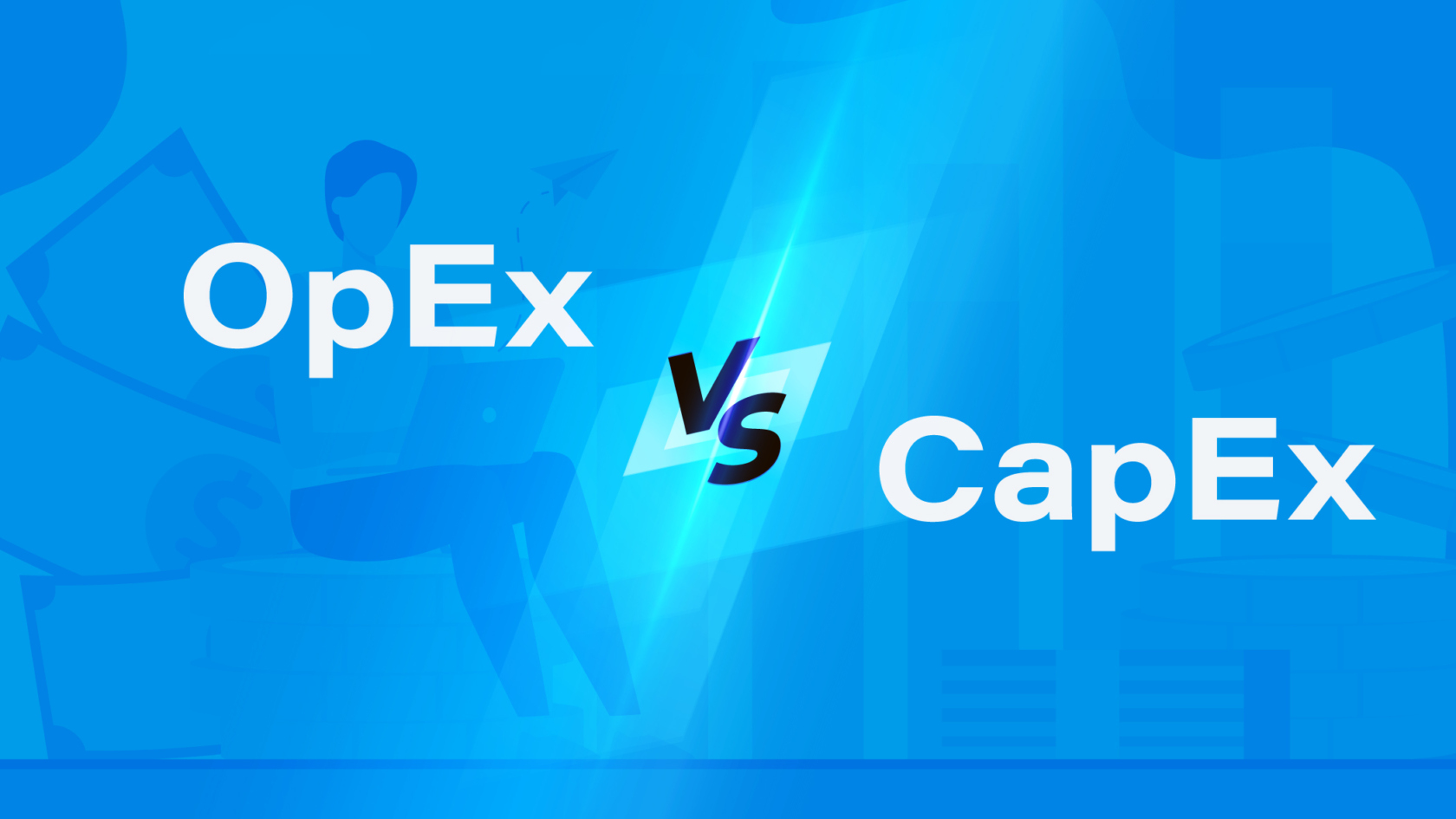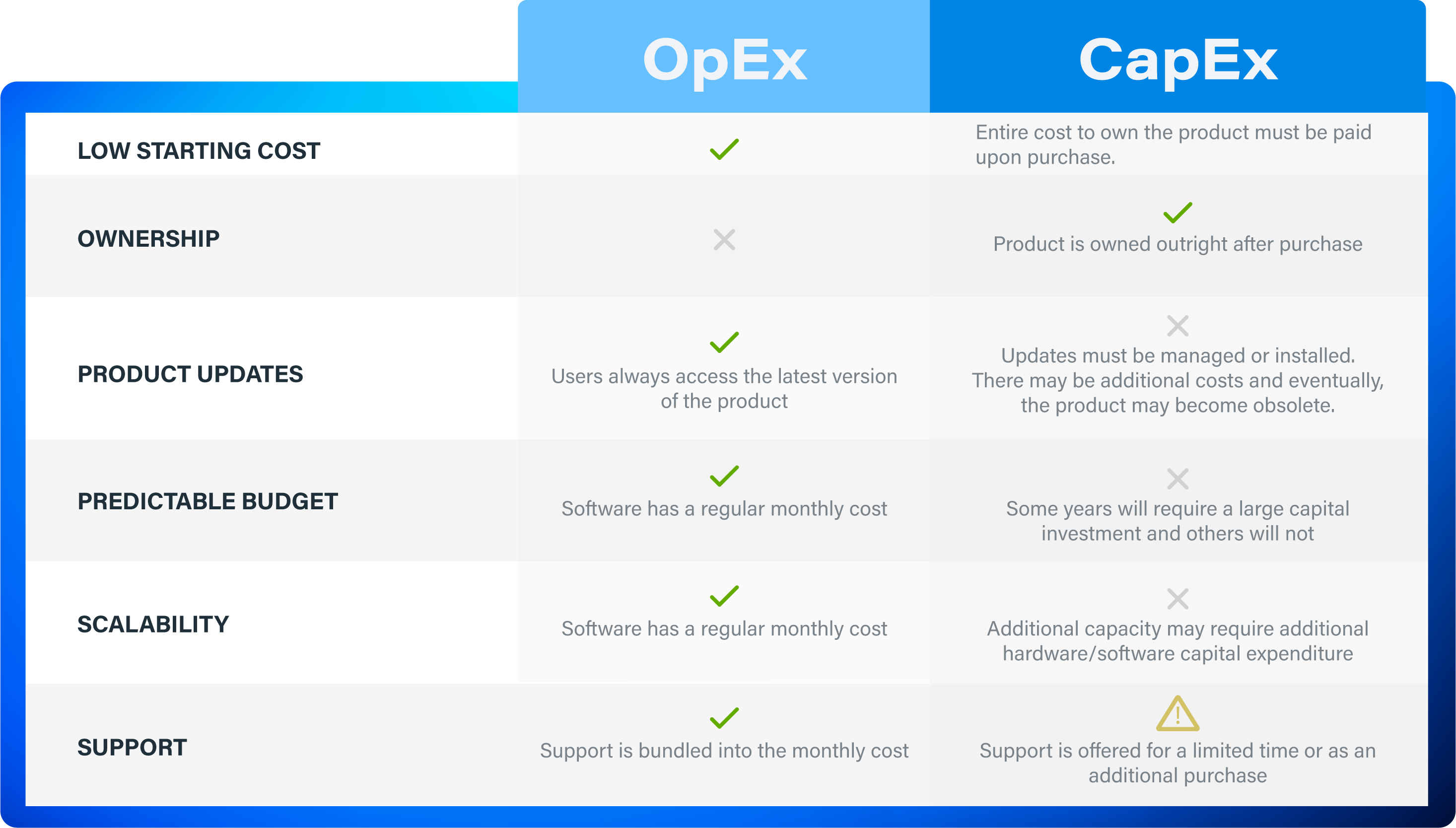
Broadcast Technology Purchase Options: Buy or Subscribe?
Broadcast technology traditionally has been delivered on bespoke hardware with software loaded onto it, a capital expense paid for up front and owned outright. However, with advances in platforming technologies in the cloud, virtually, and for download to commercial off-the-shelf (COTS) hardware, it has become more feasible for technology suppliers to provide solutions on a subscription basis — and many are doing so in response to customer demand. Over the past five years, the percentage of Chyron customers who are subscribers has edged up to the 50% point and soon will exceed it.
The ability to invest in technology on a subscription, or OpEx (operating expense) basis aligns better with many media organizations’ financial needs than does the conventional CapEx (capital expenditure) model. It prevents the scenario in which their relatively modest monthly or annual budget gets shattered every seven or eight years by the need for a major technology refresh with an enormous price tag. Instead, with the OpEx model, their budget and costs remain much more consistent and predictable. (In fact, the global pandemic has also had a role in driving adoption of the OpEx model, as financial uncertainty across markets makes the predictability of the model attractive.)
In addition to providing financial stability, subscription-based access to technology enables a steady evolution of tools and workflows. Rather than make staggered leaps to entirely new technologies every five to eight years, organizations can embrace change progressively, taking advantage of continuous updates to move forward in a more strategic and less disruptive manner. At the same time, media organizations can continue to leverage existing technology that still works for them, extending its utility rather than undertaking a wholesale replacement.
Now, in some cases, a CapEx purchase may still be the right choice, particularly for a company with the budget to spend on a significant tech upgrade within the year. Especially for a high-end system that is expected to last for years, the up-front investment will likely wind up paying off. With the benefit of ownership, however, comes the burden of updates and maintenance. With subscription-based access to the latest technology, ongoing updates and some levels of service are built into the plan. And in an industry where technology changes and improves fairly quickly, it’s important to consider how long a CapEx investment will continue to provide value. Or, how long it will be before competitive pressures make an upgrade necessary.
Access to the latest and greatest technology is among the most significant benefits of the OpEx model. For larger businesses, it can enable ongoing innovation. Scaling up or down can be easier, as well, in the event of business growth or new opportunities — or if there is a need to cut back. The inherent scalability of an OpEx model offers flexibility in implementing new capabilities and workflows, whether for ongoing operations or new projects and opportunities.
For smaller businesses, the subscription model lowers barriers to entry, offering easy access to software-based tools that otherwise might be inaccessible. Rather than pay the full cost up front, users pay a smaller amount monthly or annually for access. Already familiar to users of creative software, this approach allows a television station or sports broadcaster to position itself at the same level as larger players. Now with the same tools at its disposal, it can create the same look and feel without the high-end budget.

What kinds of businesses should consider an OpEx investment? If they want newer features. or if they are migrating toward different video standards or different workflows, an OpEx model allows them to begin the migration sooner rather than later. They don’t have to have the capital in hand just to get started.
Even if a business is not looking for all the latest and greatest features, the OpEx model can serve as a way to keep options open. In comparison to the CapEx model, it’s a future proof way to invest in technology without spending a lot, and without being committed to a technology that might become outdated or outgrown.
To conclude, however, the best choice is the one that fits best with the organization’s business and technical requirements, and vision for the future. Both models have their place, and the decision is best made in a consultative way.
Our advice: Seek out a detailed overview of how each model could work for you. Ask questions: What will I get? What will I pay, and when? What will it cost now and what will it cost each month? What if I need to scale up down the road? What will that look like in each of these models? We’ve helped a lot of customers get answers to these questions and align their investment model with their business and technical needs.


